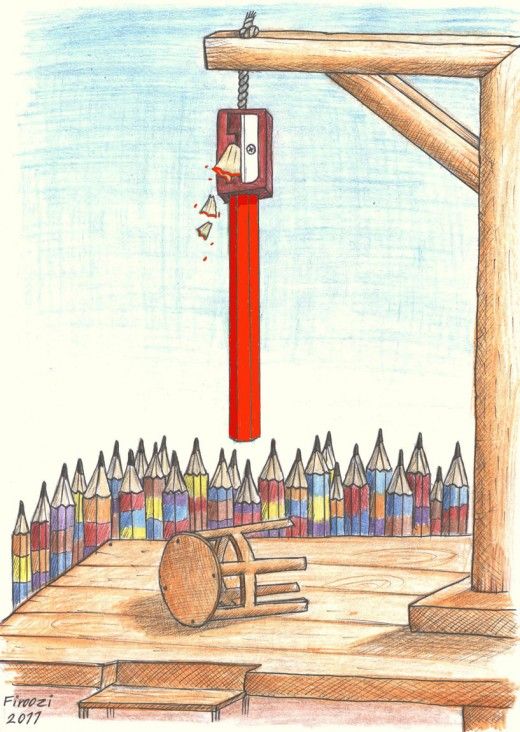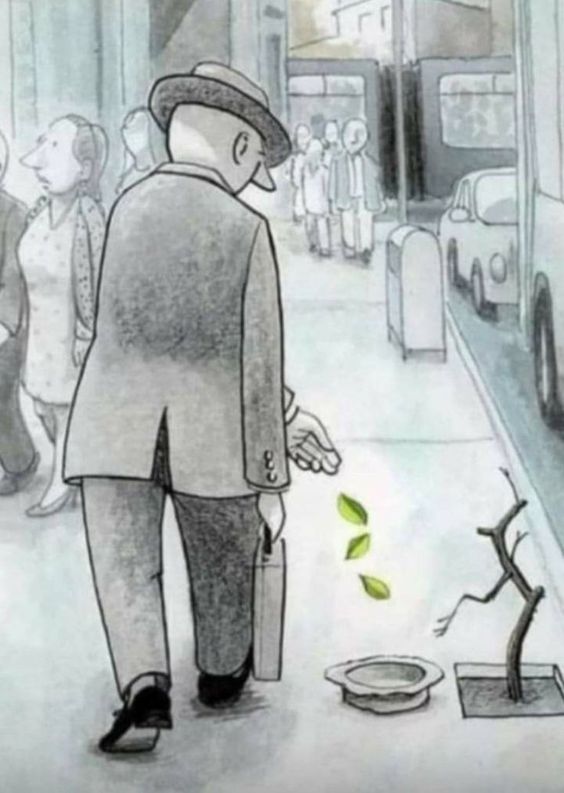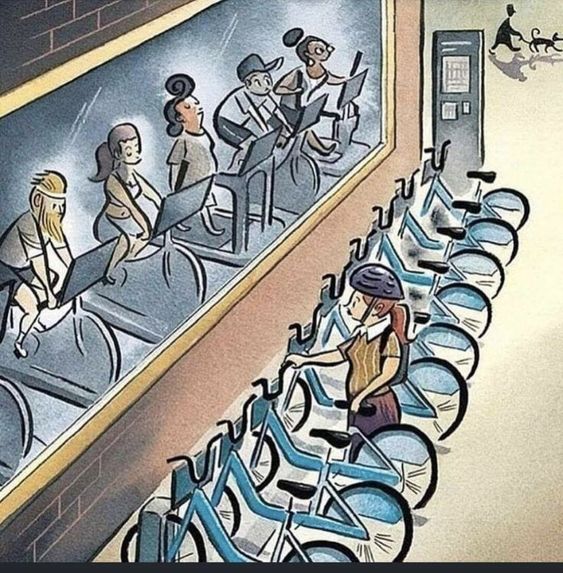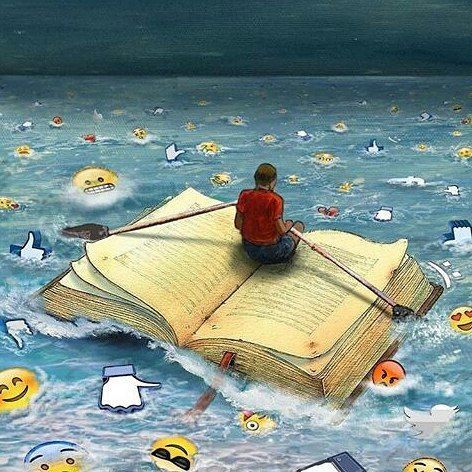
Art serves as a reflection of society, providing insight into the values, beliefs, and experiences of different cultures and communities
Waqar Abbasi
Art is a three-letter word everyone has heard and used since childhood, but does everyone know what it is? This is the most complex word to define, and simultaneously, it’s as simple as you can imagine; everyone has their own definition of defining art. I hope you are thinking about how each person has his own definition, but before I argue it, let me first briefly introduce Art and its evolution. Ernst Fischer once said, “I don’t want life to imitate art. I want life to be art. So 40,000 years ago, when humans used the wall of a cave as the first canvas to create the world’s first virtual art, not even languages existed. If we first began to learn about Art history, we must have wanted to know one of the above: the “Timeline”.
 The idea of progress through the years is intriguing; with the advancement of technology and the increase of knowledge, society has expanded over the years. As the definition of anthropology says, we study how we are humans, so art is one tool for us to view society through the frame of art, and this is how we know ourselves as a society now. So prehistoric art, as I mentioned above, is that before the written language developed, humans used cave paintings and rock engraving to share information. They depict hunting scenes, which suggests that they may have been created as a form of virtual storytelling or documentation of successful hunts.
The idea of progress through the years is intriguing; with the advancement of technology and the increase of knowledge, society has expanded over the years. As the definition of anthropology says, we study how we are humans, so art is one tool for us to view society through the frame of art, and this is how we know ourselves as a society now. So prehistoric art, as I mentioned above, is that before the written language developed, humans used cave paintings and rock engraving to share information. They depict hunting scenes, which suggests that they may have been created as a form of virtual storytelling or documentation of successful hunts.
The Indus civilization’s art is considered to be some of the earliest examples of Indian art
Other artworks depict abstract shapes and symbols that have had a spiritual or ritualistic meaning, and this all depicts the beginning of all movements throughout history. Now, the ancient art from 3000 BC to 400 BC during this period was from an advanced civilization. There were ancient art movements throughout history, including Egyptian, Greek, and Roman art. Their art movements were characterized by their unique styles, techniques, and subject matter. For instance, Egyptian art often depicted gods, pharaohs, and hieroglyphics, while ancient Greek art was known for its realism and focus on the human form. They are often considered some of the greatest achievements of human art. Here in Asia, ancient art is characterized by its own rich cultural heritage and diverse artistic styles, some of which include the Chinese, Indian, and Japanese art movements. Chinese art is known for its intricate brushwork and use of calligraphy, while Indian art often features intricate patterns, vibrant colors, and religious themes. Japanese art is known for its use of natural materials and minimalist aesthetic. Each movement has its own unique style, techniques, and subject matter.
Indian civilization, specifically the Indus Valley civilization, was one of the earliest civilizations in the world, and their art is known for its intricate geometric patterns and stylized animal motifs. Their art was created using a variety of mediums, including pottery, sculpture, and seals many of their works depict animals, such as bulls, elephants, and tigers, and a single-horned animal assumed to be a unicorn, often featuring abstract patterns and symbols.
The Indus civilization’s art is considered to be some of the earliest examples of Indian art. In these societies, art plays a vital role in enforcing religious and political ideologies, which include symbolic imagery, mythological stories, and text to tell stories of gods and rules, like the Code of Hammurabi, a piece of stone carved with the set of laws and image of king Hammurabi and the Mesopotamian god Shabash. And this technique and form of evolving subject matter in this art movement made many people consider it the foundation of Art history rather than prehistoric art.
Now it’s time to move to the age of the Church and its dominance. Yes, I’m talking about the medieval art movement. This art movement refers to the art production in Europe during the middle ages, which lasted from the 5th to the 15th centuries. In this age, artists try to convey religious messages through artwork with realism. Like the use of gold leaf and bright colors. Many of the artworks created during this period were commissioned by the Catholic Church and were intended to be religious in nature. Following this long period of darkness, the Renaissance, or the Age of Enlightenment, began. The word comes from the Italian Rinascimento, which means rebirth. Humanism, this period of European history that lasted from the 14th to the 17th century, was a great achievement in art, science, and particularly cultural subjects like art, music, and theater, as well as religion. This enlightenment sweeps up all the shadows and darkness.
 The Renaissance style is distinguished by its realism, perspective, and attention to detail. Some of the most well-known Renaissance artists include Leonardo da Vinci, Michelangelo, and Raphael. The invention of the printing press during this period also helped push creation even further. Renaissance art continues to be celebrated for its beauty and its influence on later art movements.
The Renaissance style is distinguished by its realism, perspective, and attention to detail. Some of the most well-known Renaissance artists include Leonardo da Vinci, Michelangelo, and Raphael. The invention of the printing press during this period also helped push creation even further. Renaissance art continues to be celebrated for its beauty and its influence on later art movements.
Following the Renaissance, art became more focused on individual expression and emotion, giving rise to movements such as Baroque, Rococo, Neoclassicism, Romanticism, Realism, and Impressionism. Baroque art is distinguished by dramatic, theatrical compositions, intricate ornamentation, and intense contrasts of light and dark, whereas Rococo art is distinguished by soft colors, delicate forms, and an emphasis on decorative elements such as shells, flowers, and scrolls. It is often associated with the French court of Louis XV. The Neoclassicism movement of the 18th to 19th centuries revived the classical styles of ancient Greece and Rome with their clarity, simplicity, and order and often depicted heroic or historical subjects. The Romanticism art movement was an artistic and literary movement that emerged in the late 18th century and emphasized emotion, imagination, and individualism.
Art itself is a language, beyond the words and sounds, vocabulary, grammar, structure, and composition. Art is the language of resistance; Art is the language of love; Art is a universal language
Romantic Artists have their own imagination and the nature around them. A contemporary example of a Romantic artist is Ashu Lal, a poet from Saraiki Waseb, whose song Dariya O Dariya, which was recorded by Lahooti, is an amazing example of romantic art resistance. Later, during the French Revolution, the Art movement of Realism emerged and sought to depict the world as it really was, without idealization or embellishment. It often focused on ordinary people and everyday life and was characterized by a sober, unadorned style.
There are several major art movements, including Impressionism, Post-Impressionism, Fauvism, Expressionism, Cubism, Futurism, Dadaism, Surrealism, Abstract Expressionism, Pop Art, Minimalism, Conceptual Art, and Postmodernism. Well, this direct jump to contemporary art is just because the editor might not allow me to send a book of movements before letting you into some analysis of contemporary art movements and their role in society. Let me tell you why I grabbed your attention towards these movements—the reason behind all this discourse is just to create a historical framework of art movements and their importance throughout this entire journey of human development.
 I think art itself is a language, beyond the words and sounds, vocabulary, grammar, structure, and composition. Art is the language of resistance; Art is the language of love; Art is a universal language, meaning that you don’t need any ethnicity, race, or color to understand it. These art movements have had an impact on world history as they reflect the social, cultural, and political values of their time. For example, the Renaissance marked a shift towards humanism, individualism, and scientific inquiry. The impressionist movement challenged traditional notations of art by empathizing with the subjective experiences of the artist and the viewer. Other movements have similarly reflected and influenced broader cultural and social trends. Moreover, art movements have often been associated with political movements, such as the Russian constructivist movement, which was linked to the Bolshevik Revolution, or the Chicano Art movement, which emerged in the context of Chicano civil rights in the United States. Or a bold example from Afghanistan of Negina Azimi, an outspoken street artist who excised her agency during the time of the Taliban’s invasion through her incredible art.
I think art itself is a language, beyond the words and sounds, vocabulary, grammar, structure, and composition. Art is the language of resistance; Art is the language of love; Art is a universal language, meaning that you don’t need any ethnicity, race, or color to understand it. These art movements have had an impact on world history as they reflect the social, cultural, and political values of their time. For example, the Renaissance marked a shift towards humanism, individualism, and scientific inquiry. The impressionist movement challenged traditional notations of art by empathizing with the subjective experiences of the artist and the viewer. Other movements have similarly reflected and influenced broader cultural and social trends. Moreover, art movements have often been associated with political movements, such as the Russian constructivist movement, which was linked to the Bolshevik Revolution, or the Chicano Art movement, which emerged in the context of Chicano civil rights in the United States. Or a bold example from Afghanistan of Negina Azimi, an outspoken street artist who excised her agency during the time of the Taliban’s invasion through her incredible art.
There is not much in the curriculum that arouses or helps to develop critical consciousness through art among students
Overall, art movements have played a significant role in shaping world history. Throughout this inscriptional and thought-provoking role of art in history, one thing that is really disappointing in the contemporary art movement is the commercialization of art. In this age of capitalism, even art has become a commodity. Like every other entity, capitalism has changed the purpose of art so that most of it has not been resistance, love, or humanity. These are the major causes that are impeding other movements as well.
Apart from this, during my recent visit to an Art exhibition at the Art Council of Karachi by renowned artist Hamir Soomro under the title of The Celebrating Heritage of Karachi, as per social media coverage, this was inaugurated by President ACP and Mayor Karachi. In the same post on Facebook, it seems that there are many people who came to visit this art exhibition, so after getting inspired by this post, I, along with a friend came to visit this celebration of Karachi heritage. What doubled my enthusiasm was the mass of people entering from the gate and the huge line of cars in the parking lot. I was confused and shocked that until common people are conscious of art that was a really amazing movement for me. Wait but when we reach the gallery, “There were no single people there” again Shocking! We waited outside for more than two hours, so might anybody come there? Then we thought, where is this mass public going? To search out this question, we walk all around ACP and find that nearby there is a show, “Malika e Tabassum” proudly presented by a private TV Channel and a global food brand, with an entry ticket of 1000 rupees. I’m not opposing or criticizing this show. This is also an artwork, but I’m talking about the priorities of the public. How were they built? So going through some research processes, I have found very interesting things. As per my area of study, I have gone through the basis of socialization of “Curriculum”. There is not much in the curriculum that arouses or helps to develop critical consciousness through art among students. And what I think is very important is to introduce children to art from a young age. Because art can help children to develop important skills such as creativity, problem-solving, and critical thinking. It can also improve their fine motor skills and hand-eye coordination. Learning about art can also help children appreciate and understand different cultures and perspectives. My argument is that incorporating art into the classroom can be a great way to engage children in learning.
 There are many ways to integrate art into the curriculum, such as having children create art projects based on what they’re learning in other subjects like science or history. This can help reinforce their understanding of the material while also allowing them to express themselves creatively. Throughout the entire syllabus, there are just things like joining the dots and filling in the colors. Things in the name of art are just to fill color in the circles and draw some illogical things. Have a look at an example from the general knowledge book of class one, Unit 3 ‘Myself’ – chapter 6 ‘What I Want to Be?’ If you look through this chapter, you will be surprised to know that it is about career counseling or professional knowledge. Surprisingly, there is nothing about art as a profession or artistic society and its impotence. Why don’t they think that art is an important part of society? It allows people to express themselves creatively and communicate ideas in a unique and powerful way. Art serves as a reflection of society, providing insight into the values, beliefs, and experiences of different cultures and communities. Art can inspire and challenge people, encouraging them to think critically and engage with the world around them. Finally, art can have a positive impact on individuals and communities by providing a sense of connection and belonging and promoting emotional well-being.
There are many ways to integrate art into the curriculum, such as having children create art projects based on what they’re learning in other subjects like science or history. This can help reinforce their understanding of the material while also allowing them to express themselves creatively. Throughout the entire syllabus, there are just things like joining the dots and filling in the colors. Things in the name of art are just to fill color in the circles and draw some illogical things. Have a look at an example from the general knowledge book of class one, Unit 3 ‘Myself’ – chapter 6 ‘What I Want to Be?’ If you look through this chapter, you will be surprised to know that it is about career counseling or professional knowledge. Surprisingly, there is nothing about art as a profession or artistic society and its impotence. Why don’t they think that art is an important part of society? It allows people to express themselves creatively and communicate ideas in a unique and powerful way. Art serves as a reflection of society, providing insight into the values, beliefs, and experiences of different cultures and communities. Art can inspire and challenge people, encouraging them to think critically and engage with the world around them. Finally, art can have a positive impact on individuals and communities by providing a sense of connection and belonging and promoting emotional well-being.
_________________
Waqar Abbasi is a researcher and anthropologist based in Larkana, Sindh. He holds a Master’s degree in Anthropology from the University of Sindh Jamshoro. Currently, he is engaged in an ethnographic research study focusing on ‘Schooling in the Time of Disaster’, specifically analyzing the impact of the devastating Pakistan super flood of 2022. Email: waqar_anthro@hotmail.com
All images Courtesy: Pinterest
Worth reading.